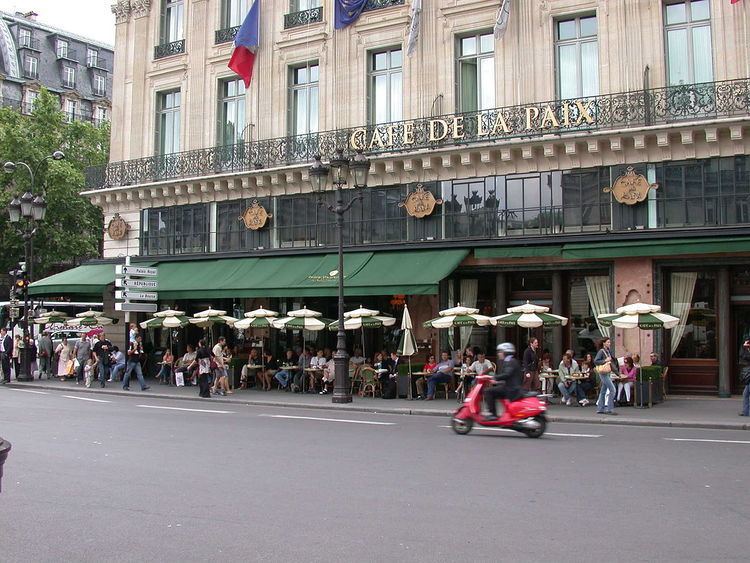Phone +33 1 40 07 36 36 | ||
 | ||
Hours Open today · 12–3PM, 6–11:30PMMonday12–3PM, 6–11:30PMTuesday12–3PM, 6–11:30PMWednesday12–3PM, 6–11:30PMThursday12–3PM, 6–11:30PMFriday12–3PM, 6–11:30PMSaturday12–3PM, 6–11:30PMSunday12–3PM, 6–11:30PM Profiles | ||
The Café de la Paix ([kafe də la pɛ]) is a famous café located on the northwest corner of the intersection of the Boulevard des Capucines with the Place de l'Opéra in the 9th arrondissement of Paris. Designed by the architect Alfred Armand, who also designed the InterContinental Paris Le Grand Hotel in which the café is located, the florid interior decor is only exceeded by that of Charles Garnier's Opéra (located across the plaza). It is said that if one sits at the café long enough, one is bound to run into a friend or acquaintance due to the café's popularity and reputation.
Contents
Thomas fersen au caf de la paix hd quality
History
The Café de la Paix opened June 30, 1862, to serve the Grand-Hôtel de la Paix (named after the nearby rue de la Paix), whose name was later shortened to Grand-Hôtel. It serviced visitors of Expo exhibition in 1867. Its proximity to the Opéra attracted many famous clients, including Jules Massenet, Émile Zola, and Guy de Maupassant. The Café is also the setting for the poem "The Absinthe Drinkers" by the Canadian poet, Robert Service
During the Belle Époque, visitors to the Café included Sergei Diaghilev, and the Prince of Wales and future King of the United Kingdom, Edward VII.
A radio studio was later installed in the Café, which broadcast the program "This is Paris" to the United States.
On August 22, 1975, the Café was declared a historic site by the French government.
